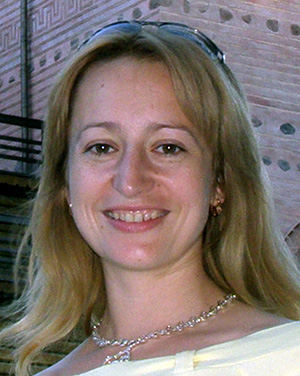|
 UDC [339.923:061.1]:332.146.2; JEL О31, R19, R58
UDC [339.923:061.1]:332.146.2; JEL О31, R19, R58
Melnyk, M. I., Shchehlyuk, S. D., Leshchukh, I. V., & Yaremchuk, R. Ye. (2020). Rehional'na polityka YeS v konteksti smart-spetsializatsiyi: efektyvnist' finansuvannya priorytetnykh napryamiv [EU regional policy in the context of smart-specialization: efficiency of priority directions’ funding]. Rehional'na ekonomika - Regional Economy, 95 (1), 172-183. DOI: https://doi.org/10.36818/1562-0905-2020-1-19. [in Ukrainian].
Sources: 18
Authors
Melnyk Maryana IvanivnaDoctor of Economics, Professor
Head of the Department of spatial development of the Dolishniy Institute of Regional Research of NAS of Ukraine
Contacts:  mar.melnyk@gmail.com, mar.melnyk@gmail.com,  (032)270-70-53, (032)270-70-53,  (+38099)72-93-873 (+38099)72-93-873
Webpages:         

Shchehlyuk Svitlana DmytrivnaPh.D. of Economics, Senior Researcher
Senior Researcher of the Department of spatial development of the Dolishniy Institute of Regional Research of NAS of Ukraine
Contacts:  shchehliuk.sv@gmail.com, shchehliuk.sv@gmail.com,  lyana.happy@gmail.com, lyana.happy@gmail.com,  (032)297-39-15, (032)297-39-15,  (+38068)135-61-16 (+38068)135-61-16
Webpages:         

Leshchukh Iryna VolodymyrivnaPh.D. of Economics, Senior Researcher
Senior Researcher, Scientific Secretary of the unit of the Department of spatial development of the Dolishniy Institute of Regional Research of NAS of Ukraine
Contacts:  ira_leschukh@ukr.net, ira_leschukh@ukr.net,  ira_borsch@mail.ru, ira_borsch@mail.ru,  (+38096)751-33-89 (+38096)751-33-89
Webpages:         

Yaremchuk Roman YevhenovychJunior Researcher of the Department of spatial development of the Dolishniy Institute of Regional Research of NAS of Ukraine
Contacts:  wyhor29@gmail.com, wyhor29@gmail.com,  wuhor@i.ua wuhor@i.ua
Webpages:      
ResumeThe paper provides the evaluation of the efficiency of financing the regional policy promotion activities from the EU structural funds and efficiency of funding of national and regional smart specialization strategies’ priorities in 2014-2020. It determines 6 key smart specialization domains among 216 RIS3 of national and regional (NUTS 2) levels: agriculture, food, and biotechnologies; green technologies, energy; transport, mobility, logistics; ICT; life sciences, biotechnologies, pharmacy, biotechnologies; material sciences and intellectual production. Four hypotheses on the close relationship between the investment volumes, directions, and results of their use are empirically verified. The results of the applied correlation analysis show the close relationship between the volumes of funding of the smart-specialization activities and the paces of agricultural output per capita with three clusters of countries by the distribution of funding by the strategic priorities. Regarding the other smart specialization priorities – “environmental technologies, energy efficiency” and “transport, mobility, logistics”, the dependence between the funding from the European Structural and Investment Funds and reducing CO2 emissions from new vehicles is proven. Support of strategic priorities “material science” and “smart production” by European Structural and Investment Funds in 2014-2020 is characterized by growing GRP volumes per capita with clear differences between the developed and average-level EU countries. The reasonability of supporting the implementation of the smart-priority “medicine, pharmacy, healthcare” in most RIS3 of EU countries and the substantial correlation of financial support from EU funds with the paces of state expenses on healthcare increase is substantiated. The conclusions about the efficiency of selected priorities, their high convergence ability, and the capacity to form transnational cooperation are made.
Keywords:regional policy, EU, smart-specialization strategy, priorities, efficiency evaluation
References- RIS3 – intervention logic (2020). Online S3: Website. URL: https://www.onlines3.eu/phase-5-policy-mix/5-1-ris3-intervention-logic
- Vyznachennya osnovnykh napryamiv smart-spetsializatsiyi mista Kyyeva. Zaklyuchnyy zvit [Defining the main directions of smart specialization of the city of Kyiv. Final report] (2019). Department of Economy and Investment of the executive body of the Kyiv City Council (Kyiv City State Administration): Website. Retrieved from https://dei.kyivcity.gov.ua/files/2019/10/22/Zvit_dosl.pdf [in Ukrainian].
- Brzóska, J., & Pyka, J. (2012). Rozwój ekosystemu innowacji w Regionie w perspektywie 2020 roku [Development of the innovation ecosystem in the Region in the perspective of 2020]. In Nowoczesność przemysłu i usług – nowe wyzwania [Modernity of industry and services – new challenges]. Katowice: TNOiK. [in Polish].
- Foray, D. (2009). Understanding «Smart Specialisation». In The questions of R&D Specialisation: Perspectives and Policy implications. Seville: Institute for Perspective Technological Studies Joint Research Centre. (pp. 14-26).
- Kosenkova, T. V. (2017). Perspektyvy rozvytku smart-spetsializatsiyi u Kharkivs’kiy oblasti [Prospects for the development of smart specialization in the Kharkiv region]. Sotsial’na ekonomika – Social Economics, 53(1), 76-80. [in Ukrainian].
- Zhalilo, Ya., A., Zhuk, V. I., & Snihova, O. Yu., et al. (2017). Nova rehional’na polityka dlya novoyi Ukrayiny [A new regional policy for a new Ukraine]: Analytical report K.: Institute of Socio-Economic Research. [in Ukrainian].
- Fedyayeva, M. S. (2018). «Rozumna» spetsializatsiya yak instrument transformatsiyi natsional’noyi ekonomiky (teoretychnyy aspekt) [«Smart» specialization as a tool for the transformation of the national economy (theoretical aspect)]. Prychornomors’ki ekonomichni studiyi – Black Sea Economic Studies, 26-1, 87-92. [in Ukrainian].
- Midtkandal, I., & Sörvik, J. (2012). What is Smart Specialisation? Nordic Center for spartial development: Website. Retrieved from http://www.nordregio.se/en/Metameny/NordregioNews/2012/Smart-Specialisation/Context
- European Structural and Investment Funds (2020, Jan 14). European Commission: Website. Retrieved from https://cohesiondata.ec.europa.eu
- Smart Specialisation Platform (2020, Jan 16). European Commission: Website. Retrieved from https://s3platform.jrc.ec.europa.eu
- Database (2020, Jan 16). Eurostat: Website. Retrieved from https://ec.europa.eu/eurostat/data/database
- Agricultural factor income per annual work unit (2020). Eurostat: Website. Retrieved from https://ec.europa.eu/eurostat/databrowser/view/sdg_02_20
- News (2020, Apr 13). European Parliament: Website. Retrieved from https://www.europarl.europa.eu/news/en/press-room/20190321IPR32112/parliament-backs-new-co2-emissions-limits-for-cars-and-vans
- Product and/or process innovative enterprises that received public funding for innovation activities by source of founding (2020). Eurostat: Website. Retrieved from https://appsso.eurostat.ec.europa.eu/nui/show.do?dataset=inn_cis10_pub&lang=en
- Net external debt – annual data, % of GDP (2020). Eurostat: Website. Retrieved from https://ec.europa.eu/eurostat/databrowser/view/tipsii20/default/bar?lang=en
- Life expectancy at birth (2020). Eurostat: Website. Retrieved from https://ec.europa.eu/eurostat/databrowser/view/sdg_03_10
- Standardised death rate due to tuberculosis, HIV and hepatitis (2020). Eurostat: Website. Retrieved from https://ec.europa.eu/eurostat/databrowser/view/sdg_03_41
- Share of people with good or very good perceived health (2020). Eurostat: Website. Retrieved from https://ec.europa.eu/eurostat/databrowser/view/sdg_03_20
|